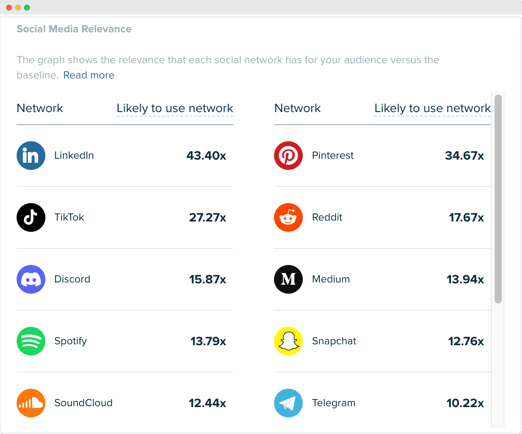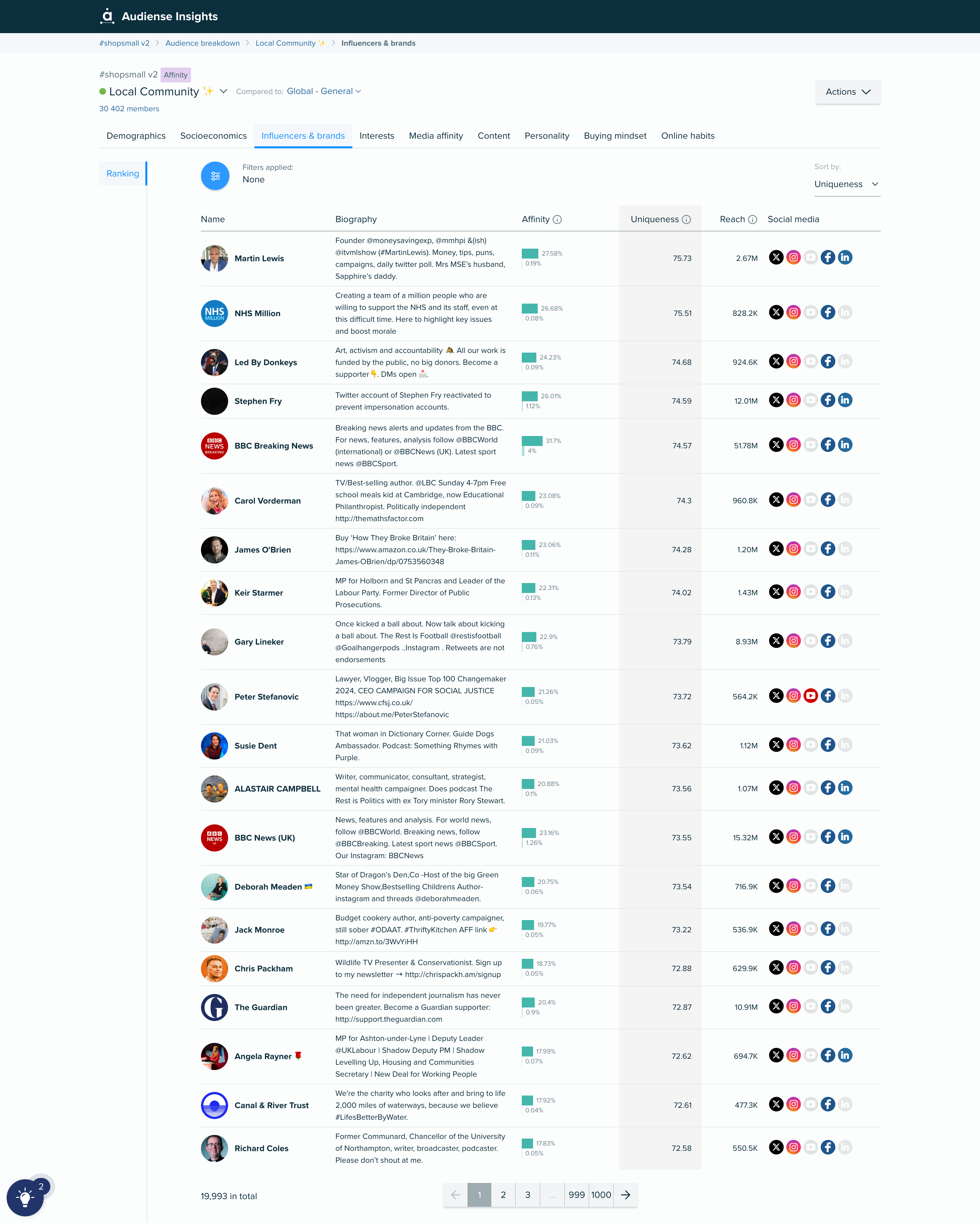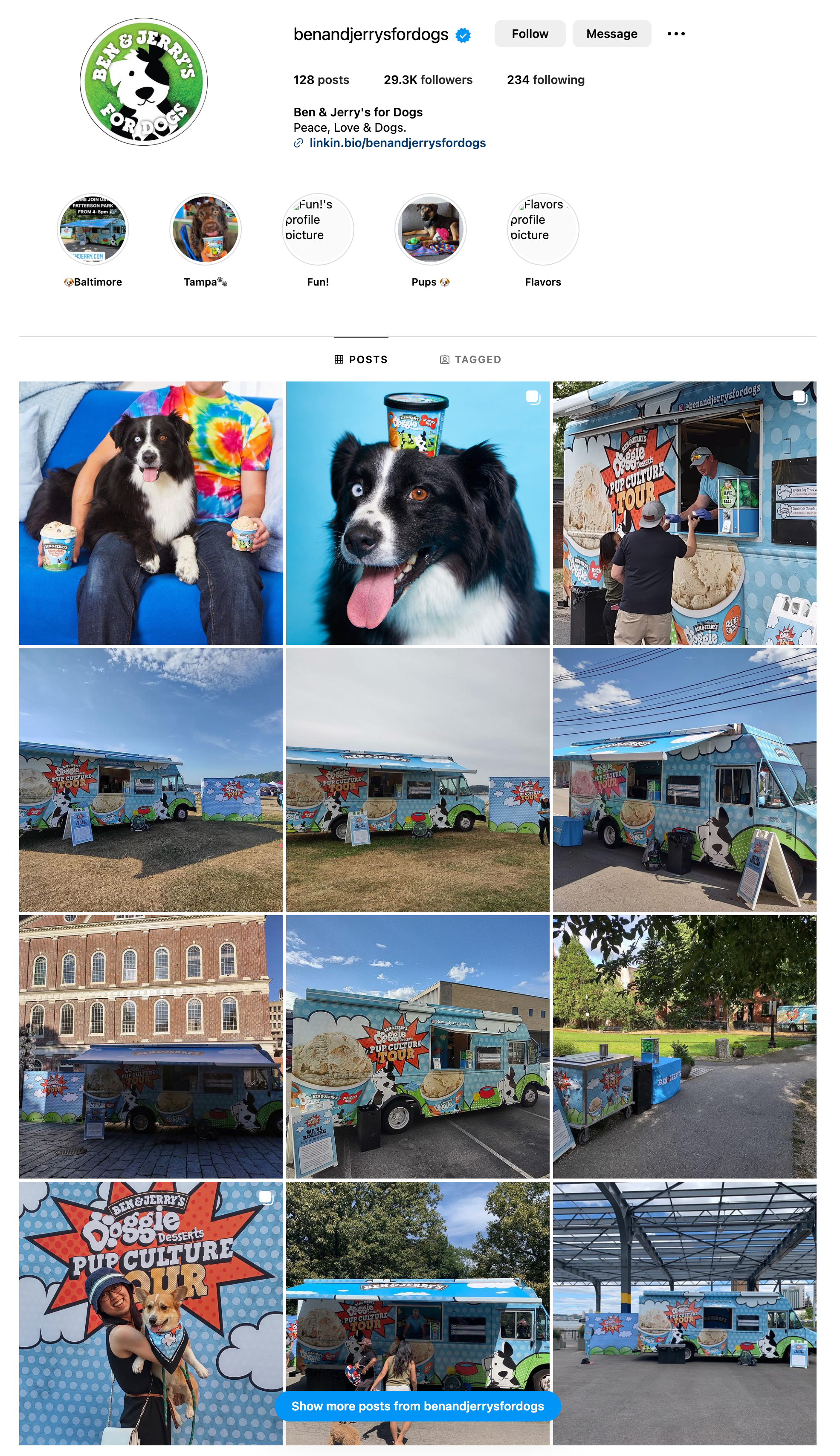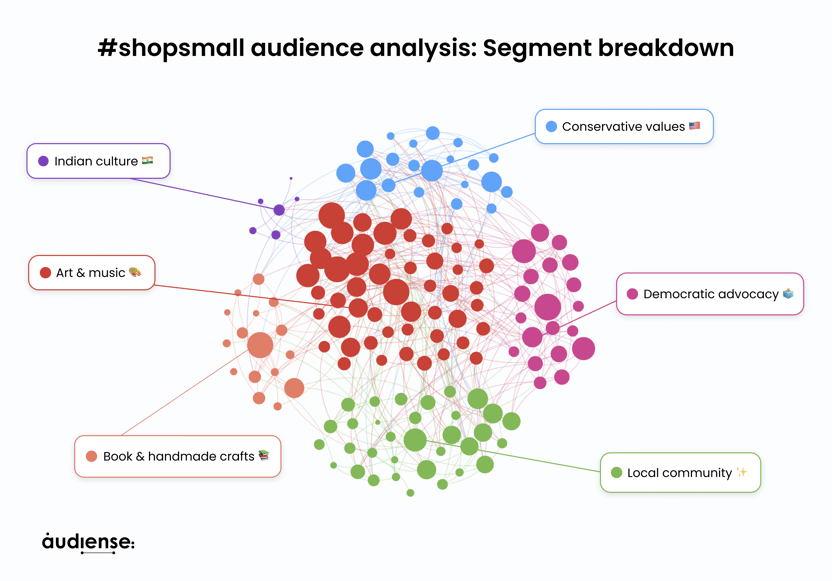IRL David & Goliath: How retail SMEs can make an impact online
When was the last time you supported a small business? Perhaps you stopped to pick up your morning latte at your local café, you bought a jumper from that vintage store your friend recommended, or you grabbed a bag of dog treats from that new boutique pet shop.
Small businesses, or SMEs, are quickly becoming the lifeblood of communities around the world, but it’s definitely not easy. SMEs are creating local jobs and opportunities for people to connect, but they also face competition from the mega corporations and big box stores. This is especially true online, where consumers are likely to go to Amazon first to search for products.
In this spotlight article, we wanted to shine a light on SMEs in the retail category to discover how they’re making an impact online and where they could make things even better. Before we do, let’s take a moment to understand the state of play for retail SMEs:
- There are 33.2 million SMEs in the US and approximately 11% of those businesses operate in the retail sector. In the UK, there are approximately a quarter of a million retail SMEs.
- While times have been tough and 50% of small business owners say they’re working more hours now than they were in the past, the hard work is paying off, with 23% expecting a higher turnover this year compared to last.
- Communities are keen to support their local retail SMEs, with research finding that consumer spending in small businesses increased by 59% during the first weekend of December, which ties in perfectly with AMEX’s Small Business Saturday initiative.
- Plus, SME retailers have been able to exploit technology to their advantage. Around 70% maintain an online store alongside their brick-and-mortar store, 70% have used a third-party marketplace.
- Furthermore, in a study of 2,000 SME retailers, 72% say they make almost half of their revenue online!
As we discussed in a recent spotlight, digital marketing allows brands to collect important data that can help you deliver more effective campaigns. For retail SMEs, this can make a huge difference to your marketing strategy and drive revenue from surprising new places.
Grab your cup of local coffee and let’s dig into how retail SMEs can become a modern-day David in a world of retail Goliaths, featuring inspirational examples from Gymshark and Chewy.
What does the #shopsmall community look like?
To help us dig deeper into the potential audiences for retail SMEs looking to grow their sales and reach more customers online, we decided to analyze people using the #shopsmall hashtag – the official hashtag of Small Business Saturday used worldwide – and break them down into bite-size segments. You can view the full report here. Before we look at the most relevant segments in more detail, let’s take a step back and look at the whole audience to see what general insights we can extract.
Looking at the audience as a whole, we can see that there is interest in shopping small from both men and women, but it skews slightly more toward men (55% men vs. 45% women). Given that the #shopsmall and Small Business Saturday initiative was originally launched in the US by American Express, it makes sense that 44% of the total audience is based in the US, but we see growing engagement from the UK (26% of the total audience) and Canada (8% of the total audience). In fact, London appears as the most prominent city for our audience, accounting for 6%, closely followed by Chicago, LA, Toronto and Washington.
If you want to deliver amazing SME digital marketing campaigns, you need to have a deeper understanding of what your audience looks like. After all, your audience is not a monolith. Our affinity report delivered six segments of people talking about Small Business Saturday and we’ve decided to focus on the three most relevant:
- Art & music 🎨
- Local community ✨
- Book & handmade crafts 📚
Art & music 🎨
- Our largest segment of the #shopsmall audience, this segment sees an almost 50/50 split between men and women, with men being the slightly larger segment of 55%. We also see that almost 50% of the audience is made up of people aged 25-34 years old and 60% are based in the US. Chicago and LA are the two biggest cities for this segment, suggesting that much of the #shopsmall activity is happening in urban areas as opposed to more rural communities.
- As you can probably guess from the name, this segment is especially interested in the arts and music. Looking at influencers and brands, we see that three of the top five are accounts related to the music industry including Drizzy, Wiz Khalifa and Rihanna. Further down the list, we also see Chris Brown, Lil Wayne and Selena Gomez, alongside cultural influencers such as Kim Kardashian and Kylie Jenner.
- Looking at broader interests, we see sports and entertainment appearing as the top interest segments, with a special interest in basketball – as proven by the NBA in the top influencers and brands – and movies. This audience are huge film buffs!
- What encourages them to purchase? According to IBM Watson, this segment can be defined as helpful, social and expressive, which is reflected in their purchase influencer factors. We see this segment is significantly more likely to be influenced by word-of-mouth from friends and family, as opposed to brand name or online advertising.
- So, where is this segment spending time? Compared to a global audience, this audience is 34 times more likely to use Pinterest, 27 times more likely to use TikTok, and 17 times more likely to use Reddit. This suggests they’re visually driven and keen to discuss topics with others in their community.

Local community ✨
- Next up, we have a segment that we’re calling ‘local community’. It’s pretty much a 50/50 split in terms of gender, but the major difference between this segment and our previous one is the location of the audience. 80% of the total segment is based in the UK and 6% are based in Ireland, with London, Manchester, Yorkshire, Dublin and Glasgow appearing as top cities.
- Looking at the influencers and brands that have an impact on this audience, we see a mixed bag of celebrities, commentators and politicians. For example, we see media personalities including Martin Lewis, Carol Vorderman, Gary Lineker, Susan Dent, Stephen Fry and Deborah Meaden; alongside politicians and organizations such as NHS Million, an account dedicated to support staff employed by the UK National Health Service (NHS).
- What gives this segment its community feel? According to IBM Watson, this segment considers both independence and helping others to guide a large part of what they do. They are genial, analytical and active and interestingly, they believe the best in others and trust people easily. All of this combined with empathy means they’re compassionate and community minded.
- Looking at the kind of media they consume, we see that they’re keen to stay informed and multiple new sources such as BBC News, Sky News and BBC Question Time appear prominently. But we also see more leisure-focused outlets including BBC Springwatch, BBC Radio 4, Financial Times and Private Eye.
- How can you reach them online? Compared to a global audience, this segment is 17 times more likely to be using LinkedIn, 8 times more likely to be reading content on Medium, and we also see audio platforms such as SoundCloud and Spotify appearing as popular platforms.

Books & handmade crafts 📚
- Our final segment is the books & handmade crafts audience, which much like the others, is roughly 50/50 but unlike the others, actually skews slightly more female. Around 40% of the total segment is based in the US, 26% in the UK, and 8% in Canada. London is the most prominent city in locations, closely followed by Toronto and LA.
- Looking at brands and influencers, we see an interesting mix of authors, musicians, and artisans including jewelry makers, sea glass artists and even dancers. What stands out most from analyzing this tab is the mix of creativity and culture which seems to be having an impact on this segment.
- This raises the question of what are the personality traits that bring this particular segment together? According to IBM Watson insights, their choices are driven by a desire for self-expression. They are helpful, analytical and expressive; they’re easier to please than other segments and they are deliberate in their decision-making, taking the time to carefully think through their decisions. Most of all, they consider it wrong to take advantage of others to get ahead, which aligns with the ‘shop small’ ethos of eschewing big brands that potentially engage in unethical practices in pursuit of profit.
- It perhaps comes as no surprise that friends and family are a major purchase influence factor for this segment, but interestingly, we do also see that this audience is receptive to online advertising and social media. This suggests that coming from the right brands, advertising is welcomed, especially if it raises awareness of small businesses and causes that matter to them.
- So, where can you reach our books & handmade crafts segment? They actually use fewer social media channels than your average consumer, but they are an incredible 37 times more likely to be using Pinterest, which means a well-curated Pinterest presence or some strategic advertising on the platform could seriously pay off for retail SMEs.

How Gymshark & Chewy are making an impact through clever digital marketing
We’ve spent a lot of time carefully sifting through the data to gain actionable insights about various consumers who are committed to shopping small. Now, it’s time to translate those insights into actions, or at least, understand how some of the savviest retail SMEs are making their mark in an online environment. To do this, we’re going to look at three very different brands: Gymshark and Chewy.
Gymshark
First launched in 2012, over the last decade Gymshark has evolved from a small start-up to a global powerhouse with just under 1,000 employees. While they’re no longer technically an SME, once upon a time they were a small business trying to make waves against the likes of Nike and Adidas. How? Influencer marketing.
@gymshark @Jamal Browner just be going thru it 💀 #gym #gymtok #Gymshark @Cranon ♬ Vengeance Phonk - TREVASPURA
Starting out on Instagram, Gymshark quickly realized the power of influencers, and since then have transitioned into platforms such as TikTok, YouTube and even Spotify. There’s a lot more to it than just sending out free clothes to the biggest influencers, what Gymshark intuitively understood was the need to build a community. Thankfully, among fitness enthusiasts, there is already a strong sense of community that centers around support, wellbeing and aiming to be the best version of yourself.
We particularly love Gymshark’s Instagram account dedicated to women, celebrating ‘muscle mommies’ of the world, which challenges perceptions around women and fitness such as lifting weights will make you look manly, and empowers women to feel good in their own bodies, championing self-love.
A brilliant example of this comes from a recent social media campaign called Gymshark66, which was first launched in 2021 as a social media campaign and has continued to run as a major pillar in Gymshark’s marketing strategy each January. Centered around the belief that it takes 66 days to form a habit, each year the brand encourages people to tackle their fitness goals and commit to sharing their journey for 66 days.
This challenge helps Gymshark tap into the community spirit that drives their core customers and brings them together under one cause, putting the brand at the heart of their customer’s journeys. This goes beyond the standard marketing ideology of presenting yourself as a solution to your customer’s problem, it makes Gymshark – and their products – an essential part of their customer’s everyday lives. Plus, the inclusion of a clear goal gives each and every customer something clear to work toward.
@lisavandervalkx Gymshark66 is about pursuing small goals to achieve big goals. A small step forward every day is already enough, so which small goals will you focus on? 🤍 #gymshark66 ♬ original sound - Lisa 🧚🏼♀️
@meagannhayes 66 days to form a habit, 66 days to transform your life #Gymshark #Gymshark66 #ad ♬ original sound - Meagan Hayes
@drkatboesenberg Gymshark66 with me Besties 🤍 let me knownif youre joining me on this challenge ✨@Gymshark #gymshark66 #gymshark #ad ♬ original sound - The preppy three🌸
@nellagrabowski #GYMSHARK66 DAY 1 @gymshark ♬ Righteous - Mo Beats
This campaign, and Gymshark’s overall marketing strategy, is all about strategic partnerships and authentic collaboration. This puts them in a great position to partner with other brands, who share the same kind of ethos, in a way that feels totally natural for their audiences. Using Affinio, we were able to identify three brands that have shown high affinity with Gymshark’s existing customer base, the most interesting of which were Fitbit and LA Fitness.
For example, a partnership with Fitbit could expand Gymshark’s potential customer base to people with a more casual interest in fitness looking to build a habit, or even newbies looking for guidance. Combining high performance athletic wear with one of the most established fitness trackers on the market is a match-made in heaven for expanding their customer base. Similarly, Gymshark could work with LA fitness to bring the Gymshark66 challenge into their branches during the month of January.
Chewy
Pet care spending has been forecast to reach nearly $188 billion in the next five years, making pet parents a lucrative revenue stream for pet-focused SMEs hoping to flourish. These days, pet owners care an awful lot more about what their four-legged friends are eating. This has opened up the industry to disruption, in the form of food subscription boxes and healthier treats. Chewy, an online pet food retailer, has been able to stand out in a hyper-competitive market through digital marketing alone.
With no brick-and-mortar stores, it’s been incredibly important for them to stand out in digital environments – particularly when they’re going up against the likes of Amazon. Fortunately, in 2021, they recruited CEO Mark Eamer who spent almost two decades working for Amazon, giving him a deep understanding of what makes online retail Goliaths tick.
According to Eamer, what makes Chewy stand out is their exceptional customer service, even in a digital-only environment. In an interview with Retail Brew, he shared a heart-warming exchange with a customer service rep. “In the early days, we had a CS rep who was chatting with a pet parent, and just felt like, ‘Hey, we need to do more than wish them Happy Birthday on the phone’,” said Eamer. “And so, when the call ended, they had the idea of, ‘Let’s write a card and send the card.’ And the customer was so over the moon, we thought, ‘Well, why not try to do this programmatically? Why not try to bring that joy to all of our customers whenever we can?’ And so, we actually funded a team out of our customer service group—we call it The Wow Team.”
I contacted @Chewy last week to see if I could return an unopened bag of my dog's food after he died. They 1) gave me a full refund, 2) told me to donate the food to the shelter, and 3) had flowers delivered today with the gift note signed by the person I talked to?? 😭🥹
— Anna Brose, MSc (@alcesanna) June 15, 2022
One standout campaign was their ‘Pets bring us together’ campaign, which aimed to appeal to the sense of community and kinship often felt by pet owners with both their furry friends and other pet parents. The marketing line for the campaign was very simple: Pets connect people. It’s their superpower.
Chewy wanted to recognise and celebrate the way pets keep us sane and grounded, which particularly resonated at the time the campaign was launched post-pandemic. They invited their customers, and pet owners in general, to share their stories, photos and videos on social media using the hashtag #PetsBringUsTogether, and they were proactive about sharing and engaging with posts.
It sounds simple, but it gives their customers an opportunity to connect with the brand in a truly authentic way. It also clearly signaled to their customers that Chewy is so much more than just an online retailer, they truly care about animals, and they want the very best for them, in a way that other mega corporations struggle to achieve. This appeals to the Gen Z and millennial desire for brands with purpose.
How can Chewy continue to show their customers they care? Using Affinio, we sniffed out some potential brands and organizations that could work well for partnerships. For example, Chewy has previously posted around raising funds for animal charities in the US. This is clearly close to their customer’s hearts, with ASPCA appearing as a top brand for Chewy’s followers. Another interesting partnership could be with Ben & Jerry’s, perhaps creating an interesting summer campaign featuring dog-safe frozen treats and ice cream, to be shipped as free samples in orders placed between June and August.
@chewy Donate $10,000,000 to rescue pets? YES PLEASE! ✅ For every purchase we'll give up to $1M per week in food and supplies to Greater Good Charities 💙 Help us reach our goal by January 1 now! Link in bio 😻#Chewy #SeasonOfGiving #pettok #cattok ♬ original sound - Chewy

Key takeaways
So, what have we learned from these two brilliant brands? Let’s take a moment to recap.
- Focus on providing value: People buy from people. Rather than going hard on super salesy emails, focus on providing value for your customers. For example, Chewy regularly puts out content such as checklists for your new pets, how to make vet trips less stressful, and ways to keep your pets calm over chaotic periods such as Christmas.
- Understand where your audience are: With so many social media channels at your disposal, it can be tricky to figure out where your time is best invested, especially for SMEs who are working with limited resources. Focus your attention on the channels and the tactics that are most likely to reach your intended audience, i.e. Gymshark makes Instagram and TikTok their key channels to reach fitness enthusiasts who are more inclined to share their journeys online.
- Let the data guide you: When it comes to planning your marketing strategy, let data be your guide. Chewy’s CEO recognised an opportunity to create a team dedicated to customer service based on an interaction in the call center, how could your business tap into actionable data to improve your marketing campaigns? If you’re relying solely on marketing data, pay attention to engagement levels, make use of tracking links, and measure key metrics to assess impact.
Ready to take the next step in audience intelligence for your marketing? With tools like Audiense and Affinio, conducting in-depth audience analysis and discovering actionable takeaways makes creating tailored marketing strategies easier than ever.







